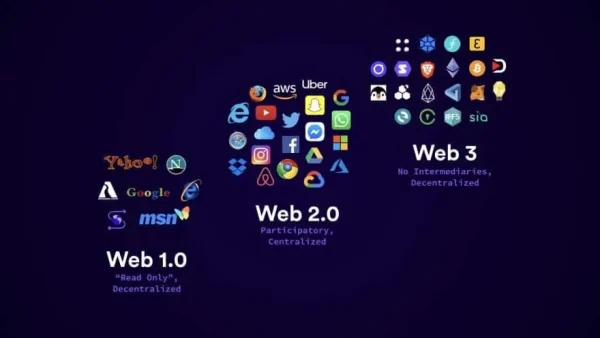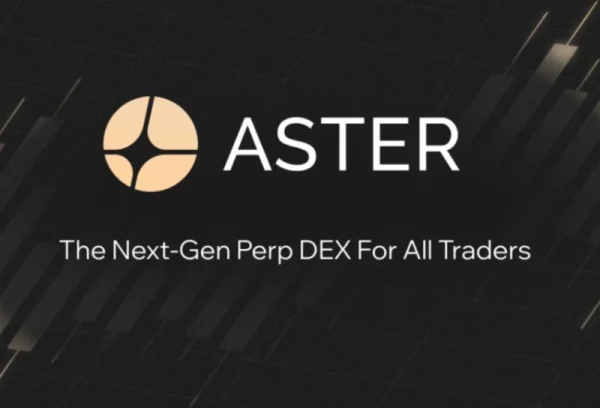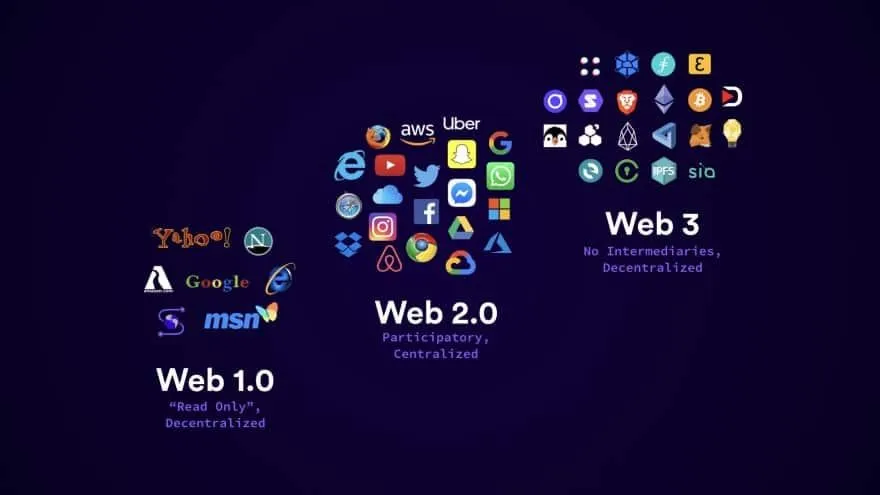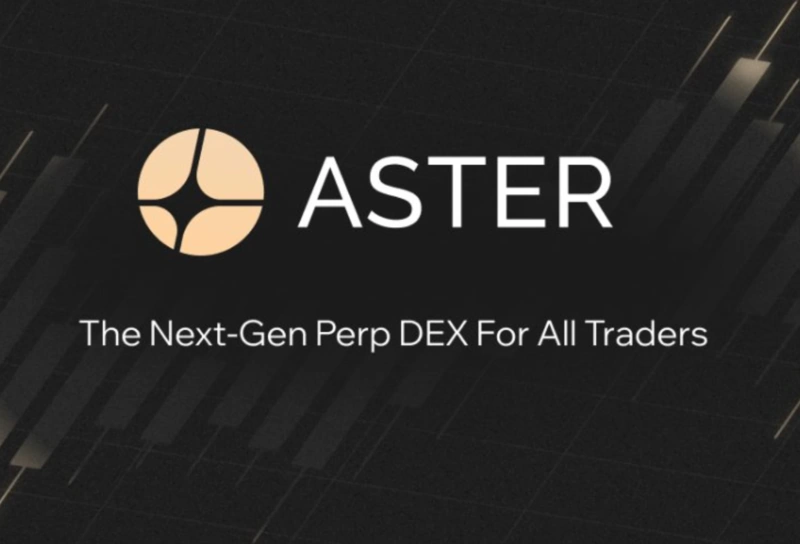What is a Blockchain Explorer? A Beginner’s Guide
Ever wondered what really happens behind the scenes when you send or receive crypto? Whether you're trading Bitcoin, minting NFTs, or checking gas fees, a blockchain explorer lets you see it all — live and in real time. It’s one of the most powerful tools in the crypto world, yet many don’t fully understand what it does or how to use it.
In just a bit, we’ll explain exactly how it works and how you can make the most of it — even if you’re new to crypto.
Table of content
- Key Takeaways
- What is a Block Explorer and How Does it Work?
- How to Use a Block Explorer for Bitcoin Transactions?
- Blockchain Explorer Advantages
- Price Tracker for Real-Time Price Monitoring
- What Is a Good Blockchain Explorer?
- Can You Track Ethereum Transactions Similar to Bitcoin?
- Blockchain Explorer Bottom Line
- FAQs About Blockchain Explorer
Key Takeaways
- Blockchain explorers are tools that allow users to search and verify real-time blockchain data — including transactions, wallet addresses, and blocks — on networks like Bitcoin and Ethereum.
- Users can track Bitcoin or Ethereum transactions by entering a transaction ID (TXID) or wallet address into explorers like Etherscan or Solscan, viewing details such as confirmations, fees, sender/receiver, and timestamps.
- Explorers promote transparency and security, offering public access to transaction history without requiring personal data, while also helping users monitor network congestion, smart contract activity, and gas fees.
What is a Block Explorer and How Does it Work?
A block explorer is essentially a search engine for blockchain networks. It lets users access detailed information about transactions, blocks, and wallet addresses. Every transaction on a blockchain is permanently recorded within a block, and explorers make it easy to find specific data by entering transaction IDs, wallet addresses, or block numbers.
Almost every blockchain network — like Bitcoin, Ethereum, or Solana — has a dedicated explorer like Solscan or Etherscan. These tools provide security and help users verify transactions, track token movements, and monitor real-time network activity.
How to Use a Block Explorer for Bitcoin Transactions?
A blockchain explorer is a tool that lets you see what’s happening on the blockchain. It’s commonly used to track Bitcoin transactions — from sending to receiving.
How to Check Bitcoin Transaction Status?
To track a Bitcoin transaction:
- Locate the transaction ID (TXID) from your wallet or exchange.
- Open a blockchain explorer, such as Solscan.io or Etherscan.io.
- Paste the TXID in the search bar.
- Review the transaction details, including confirmations and recipient addresses.
A transaction ID is a unique string of characters assigned to every Bitcoin transaction. It helps users track and verify transfers.
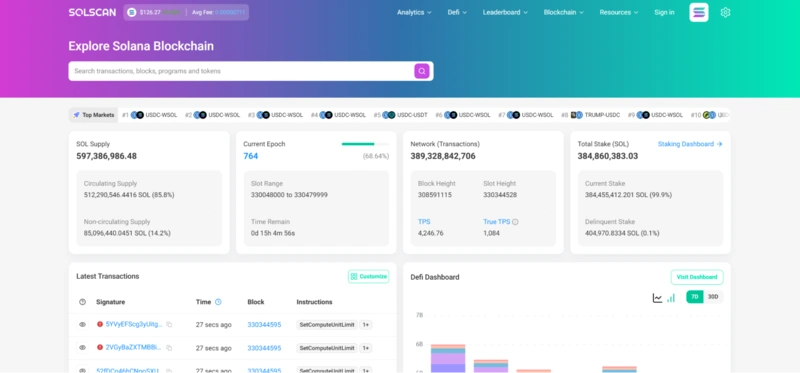
Exploring Transaction Details: What to Look For
Block Height – Shows which block contains the transaction.
Sender & Receiver Addresses – Displays who sent and received the funds.
Fee Amount – Indicates transaction fees paid to miners.
Timestamp – Displays when the transaction was initiated and confirmed.
Block height refers to the position of a block in the blockchain. The higher the number, the newer the block. Transactions are confirmed when they are included in a block.
Users can view past transactions and current balances by entering a Bitcoin address in an explorer.
Common Issues When Checking Bitcoin Transaction Status
- Unconfirmed Transactions: Transactions with zero confirmations are still being processed.
- High Fees: Low-fee transactions take longer to confirm.
- Incorrect TXID: Entering an incorrect or missing TXID can lead to search errors.
Blockchain Explorer Advantages
Transparency allows users to verify transactions without intermediaries, making blockchain transactions open and accessible to anyone. This ensures that all transactions are recorded on a public ledger, reducing the risk of fraud and increasing trust in the network. Security is another key aspect, as blockchain explorers do not require personal data for searches.
Anyone can check transactions using a wallet address or transaction ID without revealing their identity, ensuring privacy while maintaining the integrity of the network. Network monitoring provides valuable insights into blockchain activity, allowing users to track block confirmations, analyze transaction trends, and assess network congestion.
You can check our article about how blockchain was created here.
Price Tracker for Real-Time Price Monitoring
Platforms like CoinMarketCap offer price tracking features. Users can set price alerts to receive notifications and monitor historical data to analyze trends.
Market fluctuations affect transaction fees and network congestion. Higher activity can lead to slower confirmations.
Some reliable platforms that have price tracking tools include:
- CoinGecko
- CoinMarketCap
- TradingView
You can check our Best Crypto Tools List for buying and selling cryptocurrencies.
What Is a Good Blockchain Explorer?
A user-friendly interface is essential. It should have easy navigation, allowing users to find transaction data quickly. A good explorer makes checking confirmations, fees, and timestamps simple.
Easy-to-understand data is another key feature. A good explorer shows transaction details. This includes fees, confirmations, block height, and sender/receiver addresses. This helps users verify transactions and understand what is happening in the network.
Some explorers support many blockchains, making tracking different cryptocurrencies easier. While some focus only on Bitcoin or Ethereum, others cover a wider range of blockchains.
Popular blockchain explorers are Blockexplorer.one. It is known for being simple and supports Bitcoin and Ethereum. Blockchain offers insights on various networks. Etherscan, however, is ideal for tracking Ethereum transactions and smart contract information.
Can You Track Ethereum Transactions Similar to Bitcoin?
Yes, Ethereum transactions can be tracked using blockchain explorers like Etherscan.
Differences Between Bitcoin and Ethereum Block Explorers
| Feature | Bitcoin (BTC) Explorer | Ethereum (ETH) Explorer |
| Transactions | Simple, peer-to-peer | Includes smart contracts |
| Confirmations | Based on blocks | Based on gas fees |
| Data Structure | UTXO model | Account-based model |
How to Use an Ethereum Tracker for Your Crypto Transactions
- Go to Etherscan.io.
- Enter your wallet address or TXID.
- Check gas fees, block confirmations, and smart contract interactions.
While both use blockchain explorers, Ethereum explorers provide additional details on smart contracts and gas fees.
Blockchain Explorer Bottom Line
A blockchain explorer is a valuable tool for tracking transactions, monitoring network activity, and verifying data on the blockchain. Whether using Bitcoin or Ethereum, explorers offer transparency and security for crypto users.
FAQs About Blockchain Explorer
Can I track any Bitcoin transaction?
Yes, all Bitcoin transactions are recorded on a public ledger and can be tracked using a blockchain explorer.
What if my transaction is unconfirmed?
Unconfirmed transactions usually happen due to low fees or network congestion.
Are block explorers free to use?
Yes, most blockchain explorers provide free access to transaction data.
Can I track Ethereum transactions the same way?
Yes, Ethereum transactions can be tracked using explorers like Etherscan.
How do I choose the best blockchain explorer?
Look for an explorer with a simple interface, accurate transaction data, and support for multiple blockchains.
Can I check wallet balances with a blockchain explorer?
Yes, by entering a wallet address, you can view its transaction history and current balance.
